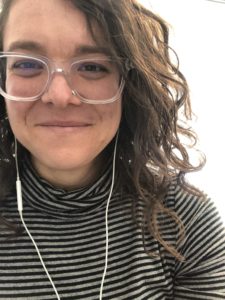formative assessment
Select an item by clicking its checkbox
The most important pedagogical practice I have engaged in during this time of pandemic stress and isolation is making sure to check in with my students. At the beginning of every class, after we pray, I poll the students to find out how they are doing. Responses are anonymous (though ...
When we suddenly made the transition online, I wanted to try to maintain as much normalcy for my students (and myself) as possible. I teach a small, honors section of our introductory Religions of the World course. There are only 11 students enrolled this semester—a real luxury. I thought we ...
I love the face-to-face learning environment. Even when I stood before my first class, uncertain if I knew enough to teach for 10 minutes much less 75, I thrived on the energy in the room. I also felt somewhat at ease with the basics, given I could draw on a lifetime of ...

Innovative Practices for Higher Education Assessment and Measurement
Date Reviewed: January 30, 2017
Editors Cano and Ion offer a group of international voices in their contribution to the Advances in Higher Education and Professional Development Book Series (series editor, Jared Keengwe), with this volume focusing on innovative practices in assessment. The book’s organization structure involves general contents followed by a detailed table of contents with full abstracts for each chapter, then a thorough summary of each of the twenty authors’ works in the preface before turning to relevant chapters. Such a format facilitates pinpointing the reader’s interest in particular methodologies for assessment, measurement, and data-gathering. The volume itself is divided into three main sections: (I) Theoretical Approaches on Students’ Assessment, (II) Research-Based Evidences on Assessment, and (III) Innovative Practices in Students’ Assessment.
The editors claim that the purpose of their book is to attend to an international level of assessment innovation with a triple perspective (theoretical, practical, and research-based), that integrates theory and practice to enrich the field of assessment (xvii). Authors have created scenario-specific assessment innovations and practices in each of their chapters so readers have a variety of choices from which to draw ideas.
Section I focuses on engaging students in self-, peer-, and professor-based assessment loops. Self-regulated learning that is based on assessment, both in face-to-face and online environments, is addressed in the chapters one through three, and six. Competency-based assessment, where student competencies are measured against standards of performance, is illustrated in chapter four. “Brain-Based Learning” discusses the neuroscience of feedback and application to contexts in chapter five. “Comparative Judgement” is introduced in chapter seven as an alternative assessment domain to counter standardized tasks and test scoring.
Section II moves to research about assessment versus testing cultures, beginning in chapter eight with meaning-oriented learning rather than recall and recognition learning. Research in this chapter shows that students will make the effort to succeed when asked to do more complex thinking than is required for standardized testing. Feeding back and feeding forward are discussed as case studies and analyses in chapters nine and ten. Self-direction and student participation are also analyzed in case studies in chapters eleven and twelve, followed by online assessment projects conducted in Portugal and Spain in the remaining two chapters of this section.
Section III names innovative practices in student assessment. The remaining chapters in the book (fifteen through twenty) attend to pedagogical approaches to incorporate assessment into the learning endeavor. The chapters include case studies and strategies. Practical applications including project-based learning and formative assessment are outlined by each set of authors.
The book is a reference resource, best used by browsing topics and making choices about which innovative approaches to assessment best fit one’s own context. There is some overlap in authors’ experiences, reinforcing the validity of the international research and pedagogical approaches. This resource, filled with illustrations, should be available in libraries for institutions of higher education that are working on self-study and self-assessment. There is much here to aid teachers in honing their attention to assessment excellence as part of the pedagogical task.


